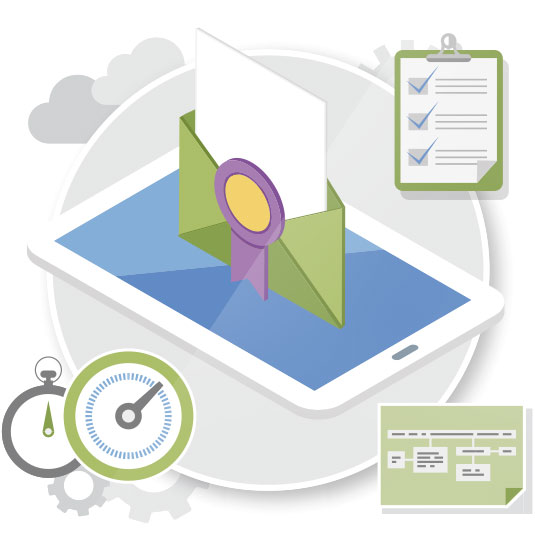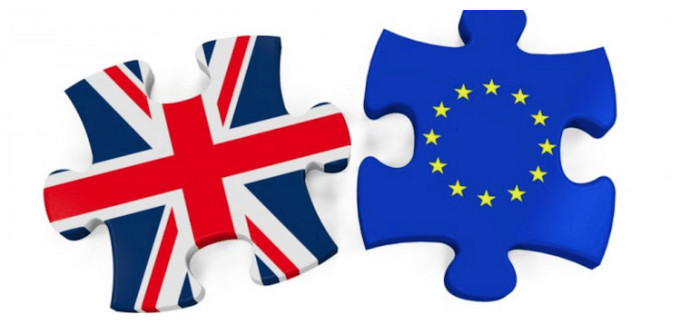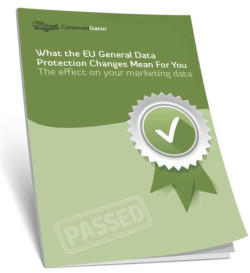From May 2018, email marketers in the UK and EU will not be allowed to market to any data that has not given explicit consent. The industry must take notice and start building high-value, opt-in data immediately.
Lee Chadwick gives marketers two reasons why they should read and heed this article about data regulation changes.
- €20 million fine
- No customer data to market to
For some time now, businesses haven’t been paying too much attention to the balance between the right to privacy and the right to market to individuals. As a matter of fact, we have pretty much not been paying attention to it at all. However, The EU General Data Protection Regulation (GDPR) is on its way and it’s going to force the industry to take notice and realise there is a new order.
Come 25th May 2018, what the new GDPR means is that data in the EU and the UK will need to be double opted-in to contact lists for communications to be legal. If you start trying to market and sell to data that hasn’t opted-in to your communications, you’ll be facing a massive fine. How does the tune of up to €20 million or 4% of your annual turnover sound? Scary? Well, if you don’t comply with the new rules, you could be fined one of these amounts, whichever equates to the largest amount of money. Also, failure to become compliant will mean you’ll have no data to market to come 2018. So, two strong reasons why you need to prepare for the changes now.
What’s in store for email marketing?
The EU General Data Protection Regulation fundamentally changes how businesses can email potential and existing customers, and how they monitor online behaviour. The legislation, designed to establish a harmonised data protection framework across the EU, has two constituent parts. The first is that you must have consent to use cookies on your website to track a person’s behaviour. And the second is that you must have written consent to send an email to someone.
 To date in the UK, we’ve traditionally adopted a ‘soft’ opt-in approach. This has meant, for example, that we can market to individuals we’ve exchanged business cards with or who have checked a box giving us permission to send information. We can also buy lists of target customers and email them, so long as we provide an option to opt-out of receiving future information. The option to opt-out is no longer an option. After 25th May 2018, you will not be allowed to market to any data that has not given you explicit consent. Your email subscribers must complete a compliant opt-in form that says they wish to receive future marketing communications from your organisation. Implied consent (ie. a customer who already has a relationship with your organisation or an engaged subscriber who hasn’t opted-out of your communications) does not count as explicit consent.
To date in the UK, we’ve traditionally adopted a ‘soft’ opt-in approach. This has meant, for example, that we can market to individuals we’ve exchanged business cards with or who have checked a box giving us permission to send information. We can also buy lists of target customers and email them, so long as we provide an option to opt-out of receiving future information. The option to opt-out is no longer an option. After 25th May 2018, you will not be allowed to market to any data that has not given you explicit consent. Your email subscribers must complete a compliant opt-in form that says they wish to receive future marketing communications from your organisation. Implied consent (ie. a customer who already has a relationship with your organisation or an engaged subscriber who hasn’t opted-out of your communications) does not count as explicit consent.
This all maybe nothing new for B2C marketing, but the time has come for the B2B world to be brought into line. It is rather ironic that as a nation we’ve just opted out, but are now being forced to opt in ! And, if you’re wondering if Brexit will have an impact on GDPR, the answer is no.
! And, if you’re wondering if Brexit will have an impact on GDPR, the answer is no.
What are the implications?
Essentially, your purchased data lists will reduce in quality and the new procedure will undoubtedly lower the number of people with whom you can legally communicate. The sign-up process can appear onerous and if you ask for too much, too early, dropouts will inevitably occur. However, the size of your list can be a misleading metric; quality always wins over quantity. Evidence shows that opt-in data performs far better than blanket promotion; open rates are higher, engagement is better and this drives increased click-through and higher conversion rates.
At CommuniGator, click-through rates for opt-in data perform at 37%. That’s a striking figure and one that goes to prove, even without the ‘motivation’ of legislation, that opt-in is definitely the right path to take.
What are the next steps?
- Double opting-in isn’t that difficult, and it can even mean higher engagement rates for your campaigns. It’s undoubtedly in your best interests no matter what to get this done. Collect data correctly and drive your email marketing forward.
- Start the process of building your double opt-in lists and make the most of the opportunity to use the opt-out approach while you’re still allowed to. Begin the process with your existing customers, along with subscribers to any newsletters or e-communications you currently produce. Don’t forget, you’ll need legal consent to send continuous streams of marketing content to all your current contacts.
- Revisit any purchased lists you may previously have used.
- At the same time, update your customer contracts and T&Cs so that they include opt-in terminology, and redesign your online processes to accommodate the new requirements. This may mean you have to examine your current email marketing platform.
- To fully avoid the strict penalties ahead, it is going to be important to keep records of the subscribers who have opted-in to your communications. One of the most important elements that the EU GDPR is that it categorically states that your consent has to be provable. By keeping a record of your opted-in subscribers, you will be able to provide the proof of consent you need to.
It’s easy to speed up the process and start building high-value, opt-in data immediately with the right technology and the right partner. The best technologies bring plug-and-play compliance to your digital marketing. The most effective partners offer specialist expertise to inform best practice and a permission-based opt-in list of your target market is invaluable.
 In the era of content-driven inbound marketing, email remains a powerful stimulus for high-value marketing automation and lead generation. Doing nothing now will risk weakening the future value of email marketing.
In the era of content-driven inbound marketing, email remains a powerful stimulus for high-value marketing automation and lead generation. Doing nothing now will risk weakening the future value of email marketing.
Start getting explicit consent. You have 18 months to adapt your business approach, operation and security policies when it comes to data protection and, if you’re not ready in time, you will lose any B2B marketing data that isn’t opted-in.
Just keep asking yourself how will your business cope if you are no longer able to send emails to your existing customers or prospective customers to generate new business. It’s such a worrying concept – just don’t let it become a reality.
Get the whitepaper on the regulation changes here.


 To date in the UK, we’ve traditionally adopted a ‘soft’ opt-in approach. This has meant, for example, that we can market to individuals we’ve exchanged business cards with or who have checked a box giving us permission to send information. We can also buy lists of target customers and email them, so long as we provide an option to opt-out of receiving future information. The option to opt-out is no longer an option. After 25th May 2018, you will not be allowed to market to any data that has not given you explicit consent. Your email subscribers must complete a compliant opt-in form that says they wish to receive future marketing communications from your organisation. Implied consent (ie. a customer who already has a relationship with your organisation or an engaged subscriber who hasn’t opted-out of your communications) does not count as explicit consent.
To date in the UK, we’ve traditionally adopted a ‘soft’ opt-in approach. This has meant, for example, that we can market to individuals we’ve exchanged business cards with or who have checked a box giving us permission to send information. We can also buy lists of target customers and email them, so long as we provide an option to opt-out of receiving future information. The option to opt-out is no longer an option. After 25th May 2018, you will not be allowed to market to any data that has not given you explicit consent. Your email subscribers must complete a compliant opt-in form that says they wish to receive future marketing communications from your organisation. Implied consent (ie. a customer who already has a relationship with your organisation or an engaged subscriber who hasn’t opted-out of your communications) does not count as explicit consent. ! And, if you’re wondering if
! And, if you’re wondering if  In the era of content-driven inbound marketing, email remains a powerful stimulus for high-value marketing automation and lead generation. Doing nothing now will risk weakening the future value of email marketing.
In the era of content-driven inbound marketing, email remains a powerful stimulus for high-value marketing automation and lead generation. Doing nothing now will risk weakening the future value of email marketing.



Leave your thoughts